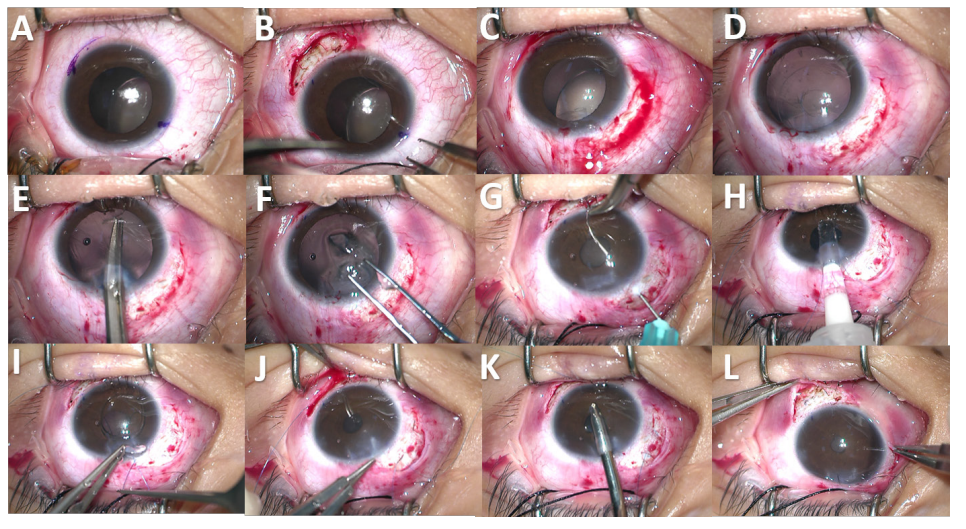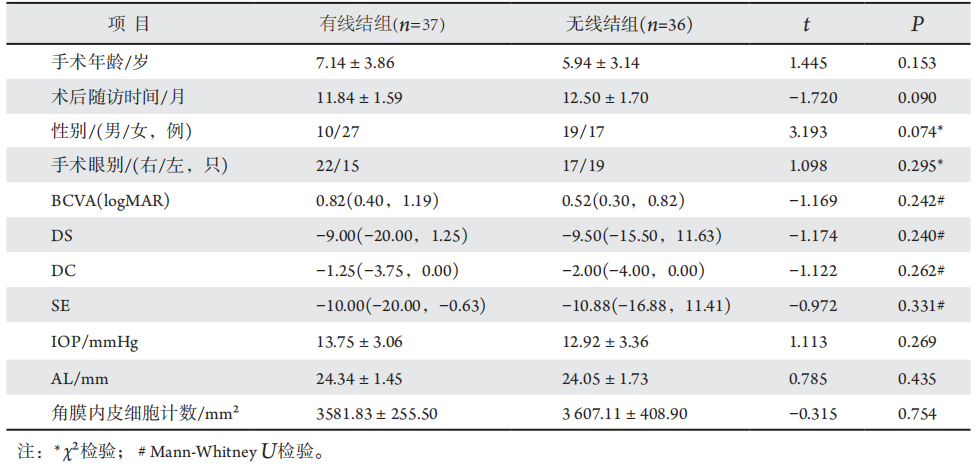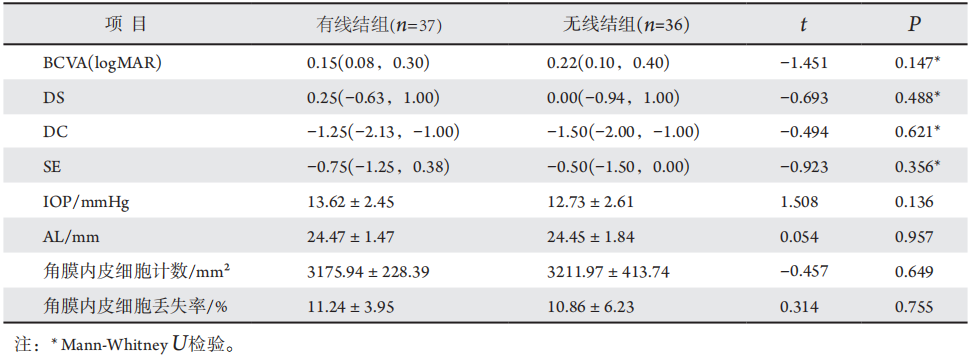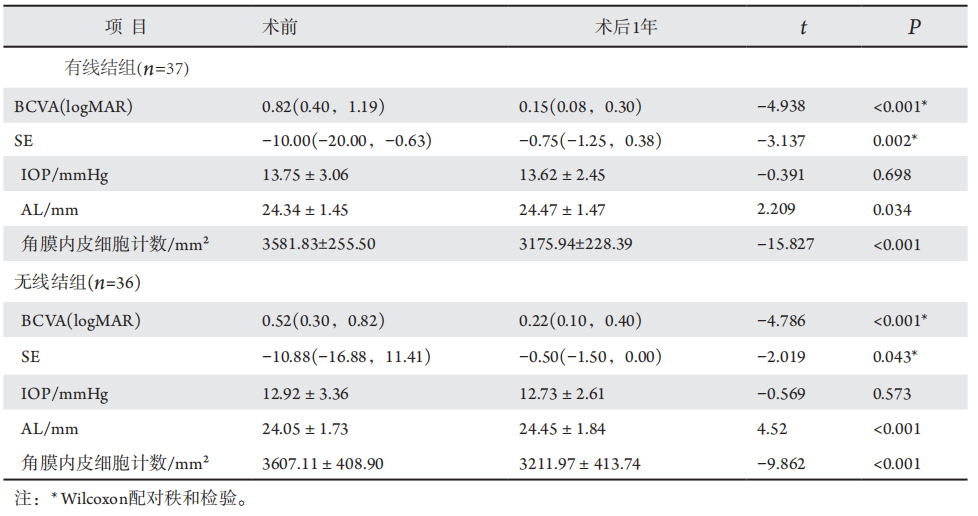1、Burian HM, Allen L. Histologic study of the chamber angel of patients
with Marfan's syndrome. A discussion of the cases of Theobald, Reeh
and Lehman, and Sadi de Buen and Velazquez[ J]. Arch Ophthalmol
Chic Ill 1960, 1961, 65: 323-33.Burian HM, Allen L. Histologic study of the chamber angel of patients
with Marfan's syndrome. A discussion of the cases of Theobald, Reeh
and Lehman, and Sadi de Buen and Velazquez[ J]. Arch Ophthalmol
Chic Ill 1960, 1961, 65: 323-33.
2、Nelson LB, Maumenee IH. Ectopia lentis[ J]. Surv Ophthalmol, 1982,
27(3): 143-160.Nelson LB, Maumenee IH. Ectopia lentis[ J]. Surv Ophthalmol, 1982,
27(3): 143-160.
3、Maumenee IH. The eye in the Marfan syndrome[ J]. Trans Am
Ophthalmol Soc, 1981, 79: 684-733.Maumenee IH. The eye in the Marfan syndrome[ J]. Trans Am
Ophthalmol Soc, 1981, 79: 684-733.
4、Dagi LR, Walton DS. Anterior axial lens subluxation, progressive
myopia, and angle-closure glaucoma: recognition and treatment of
atypical presentation of ectopia lentis[ J]. J AAPOS, 2006, 10(4): 345-
350.Dagi LR, Walton DS. Anterior axial lens subluxation, progressive
myopia, and angle-closure glaucoma: recognition and treatment of
atypical presentation of ectopia lentis[ J]. J AAPOS, 2006, 10(4): 345-
350.
5、Dureau P. Pathophysiology of zonular diseases. Curr Opin Ophthalmol,
2008, 19(1): 27-30.Dureau P. Pathophysiology of zonular diseases. Curr Opin Ophthalmol,
2008, 19(1): 27-30.
6、Jin G M, Fan M, Cao QZ, et al. Trends and characteristics of congenital
ectopia lentis in China[ J]. Int J Ophthalmol, 2018, 11(9): 1545-1549.Jin G M, Fan M, Cao QZ, et al. Trends and characteristics of congenital
ectopia lentis in China[ J]. Int J Ophthalmol, 2018, 11(9): 1545-1549.
7、McAllister AS, Hirst LW. Visual outcomes and complications of scleral-
fixated posterior chamber intraocular lenses[ J]. J Cataract Refract Surg,
2011, 37(7): 1263-1269.McAllister AS, Hirst LW. Visual outcomes and complications of scleral-
fixated posterior chamber intraocular lenses[ J]. J Cataract Refract Surg,
2011, 37(7): 1263-1269.
8、Hannush SB. Sutured posterior chamber intraocular lenses: indications
and procedure[ J]. Curr Opin Ophthalmol, 2000, 11(4): 233-240.Hannush SB. Sutured posterior chamber intraocular lenses: indications
and procedure[ J]. Curr Opin Ophthalmol, 2000, 11(4): 233-240.
9、Wagoner MD, Cox TA, Ariyasu RG, et al. Intraocular lens implantation
in the absence of capsular support: a report by the American Academy
of Ophthalmology[ J]. Ophthalmology, 2003, 110(4): 840-859.Wagoner MD, Cox TA, Ariyasu RG, et al. Intraocular lens implantation
in the absence of capsular support: a report by the American Academy
of Ophthalmology[ J]. Ophthalmology, 2003, 110(4): 840-859.
10、Jacob S, Kumar DA, Rao NK. Scleral fixation of intraocular lenses[ J].
Curr Opin Ophthalmol, 2020, 31(1): 50-60.Jacob S, Kumar DA, Rao NK. Scleral fixation of intraocular lenses[ J].
Curr Opin Ophthalmol, 2020, 31(1): 50-60.
11、Solomon K, Gussler JR, Gussler C, et al. Incidence and management of
complications of transsclerally sutured posterior chamber lenses[ J]. J
Cataract Refract Surg, 1993, 19(4): 488-493.Solomon K, Gussler JR, Gussler C, et al. Incidence and management of
complications of transsclerally sutured posterior chamber lenses[ J]. J
Cataract Refract Surg, 1993, 19(4): 488-493.
12、Uthoff D, Teichmann KD. Secondary implantation of scleral-fixated
intraocular lenses[ J]. J Cataract Refract Surg, 1998, 24(7): 945-950.Uthoff D, Teichmann KD. Secondary implantation of scleral-fixated
intraocular lenses[ J]. J Cataract Refract Surg, 1998, 24(7): 945-950.
13、Holland EJ, Daya SM, Evangelista A, et al. Penetrating keratoplasty and
transscleral fixation of posterior chamber lens[ J]. Am J Ophthalmol,
1992, 114(2): 182-187.Holland EJ, Daya SM, Evangelista A, et al. Penetrating keratoplasty and
transscleral fixation of posterior chamber lens[ J]. Am J Ophthalmol,
1992, 114(2): 182-187.
14、Szurman P, Petermeier K, Aisenbrey S, et al. Z-suture: a new knotless
technique for transscleral suture �xation of intraocular implants[ J]. Br J
Ophthalmol, 2010, 94(2): 167-169.Szurman P, Petermeier K, Aisenbrey S, et al. Z-suture: a new knotless
technique for transscleral suture �xation of intraocular implants[ J]. Br J
Ophthalmol, 2010, 94(2): 167-169.
15、Dimopoulos S, Dimopoulos V, Blumenstock G, et al. Long-term
outcome of scleral-fixated posterior chamber intraocular lens
implantation with the knotless Z-suture technique[ J]. J Cataract
Refract Surg, 2018, 44(2): 182-185.Dimopoulos S, Dimopoulos V, Blumenstock G, et al. Long-term
outcome of scleral-fixated posterior chamber intraocular lens
implantation with the knotless Z-suture technique[ J]. J Cataract
Refract Surg, 2018, 44(2): 182-185.
16、McAllister AS, Hirst LW. Visual outcomes and complications of scleral-
fixated posterior chamber intraocular lenses[ J]. J Cataract Refract Surg,
2011, 37(7): 1263-1269.McAllister AS, Hirst LW. Visual outcomes and complications of scleral-
fixated posterior chamber intraocular lenses[ J]. J Cataract Refract Surg,
2011, 37(7): 1263-1269.
17、Por YM, Lavin MJ. Techniques of intraocular lens suspension in the
absence of capsular/zonular support[ J]. Surv Ophthalmol, 2005,
50(5): 429-462.Por YM, Lavin MJ. Techniques of intraocular lens suspension in the
absence of capsular/zonular support[ J]. Surv Ophthalmol, 2005,
50(5): 429-462.
18、Khan MA, Gupta OP, Smith RG, et al. Scleral fixation of intraocular
lenses using Gore-Tex suture: clinical outcomes and safety profile[ J].
Br J Ophthalmol, 2016, 100(5): 638-643.Khan MA, Gupta OP, Smith RG, et al. Scleral fixation of intraocular
lenses using Gore-Tex suture: clinical outcomes and safety profile[ J].
Br J Ophthalmol, 2016, 100(5): 638-643.
19、Gimbel HV, Condon GP, Kohnen T, et al. Late in-the-bag intraocular
lens dislocation: incidence, prevention, and management[ J]. J Cataract
Refract Surg, 2005, 31(11): 2193-2204.Gimbel HV, Condon GP, Kohnen T, et al. Late in-the-bag intraocular
lens dislocation: incidence, prevention, and management[ J]. J Cataract
Refract Surg, 2005, 31(11): 2193-2204.
20、Wallmann AC, Monson BK, Adelberg DA. Transscleral fixation of a
foldable posterior chamber intraocular lens[ J]. J Cataract Refract Surg,
2015, 41(9): 1804-1809.Wallmann AC, Monson BK, Adelberg DA. Transscleral fixation of a
foldable posterior chamber intraocular lens[ J]. J Cataract Refract Surg,
2015, 41(9): 1804-1809.
21、Khan MA, Samara WA, Gerstenblith AT,et al. Combined pars Plana
vitrectomy and scleral fixation of an intraocular lens using gore-tex
suture: one-year outcomes[ J]. Retina, 2018, 38(7): 1377-1384.Khan MA, Samara WA, Gerstenblith AT,et al. Combined pars Plana
vitrectomy and scleral fixation of an intraocular lens using gore-tex
suture: one-year outcomes[ J]. Retina, 2018, 38(7): 1377-1384.
22、Chee SP, Chan NSW. Suture snare technique for scleral fixation of
intraocular lenses and capsular tension devices[ J]. Br J Ophthalmol,
2018, 102(10): 1317-1319.Chee SP, Chan NSW. Suture snare technique for scleral fixation of
intraocular lenses and capsular tension devices[ J]. Br J Ophthalmol,
2018, 102(10): 1317-1319.
23、John T, Tighe S, Hashem O, et al. New use of 8-0 polypropylene suture
for four-point scleral fixation of secondary intraocular lenses[ J]. J
Cataract Refract Surg, 2018, 44(12): 1421-1425.John T, Tighe S, Hashem O, et al. New use of 8-0 polypropylene suture
for four-point scleral fixation of secondary intraocular lenses[ J]. J
Cataract Refract Surg, 2018, 44(12): 1421-1425.
24、Zhao P, Ou Z, Zhang Q, et al. Adjustable buckle-slide suture: a novel
surgical technique for transscleral fixation of intraocular lenses[ J].
Retina, 2019, 39(Suppl 1): S24-S29.Zhao P, Ou Z, Zhang Q, et al. Adjustable buckle-slide suture: a novel
surgical technique for transscleral fixation of intraocular lenses[ J].
Retina, 2019, 39(Suppl 1): S24-S29.
25、Rezar-Dreindl S, Stifter E, Neumayer T, et al. Visual outcome and
surgical results in children with Marfan syndrome[ J]. Clin Exp
Ophthalmol, 2019, 47(9): 1138-1145.Rezar-Dreindl S, Stifter E, Neumayer T, et al. Visual outcome and
surgical results in children with Marfan syndrome[ J]. Clin Exp
Ophthalmol, 2019, 47(9): 1138-1145.
26、Sridhar J, Chang JS. Marfan's syndrome with ectopia lentis[ J]. N Engl J
Med, 2017, 377(11): 1076.Sridhar J, Chang JS. Marfan's syndrome with ectopia lentis[ J]. N Engl J
Med, 2017, 377(11): 1076.
27、Bourne RR, Minassian DC, Dart JK, et al. E�ect of cataract surgery on
the corneal endothelium: modern phacoemulsi�cation compared with
extracapsular cataract surgery[ J]. Ophthalmology, 2004, 111(4): 679-
685.Bourne RR, Minassian DC, Dart JK, et al. E�ect of cataract surgery on
the corneal endothelium: modern phacoemulsi�cation compared with
extracapsular cataract surgery[ J]. Ophthalmology, 2004, 111(4): 679-
685.







